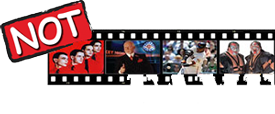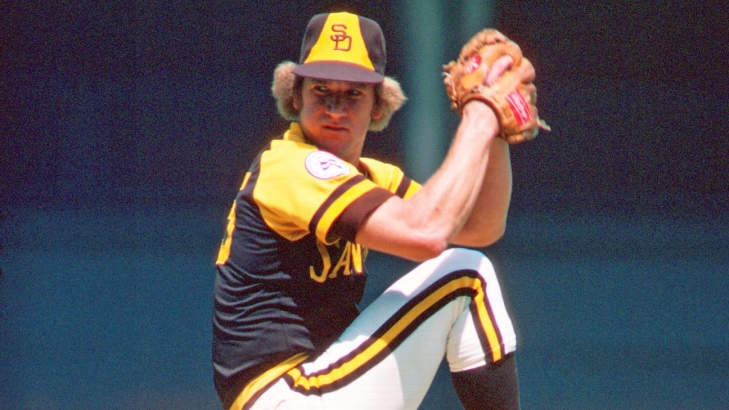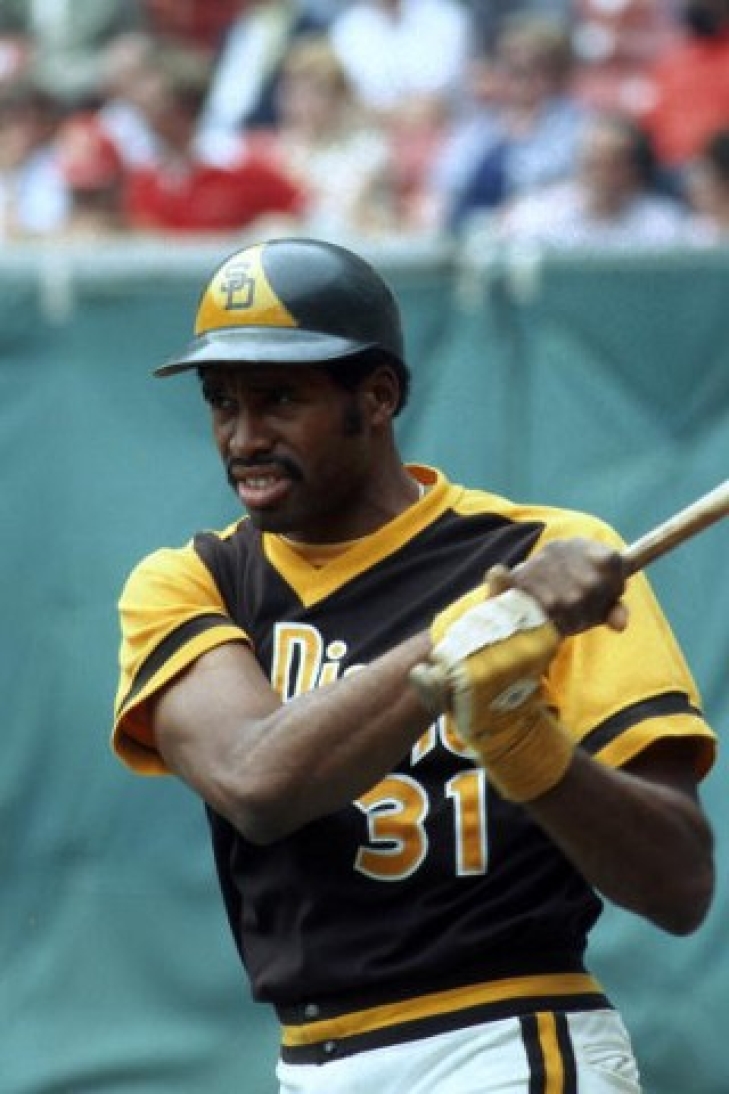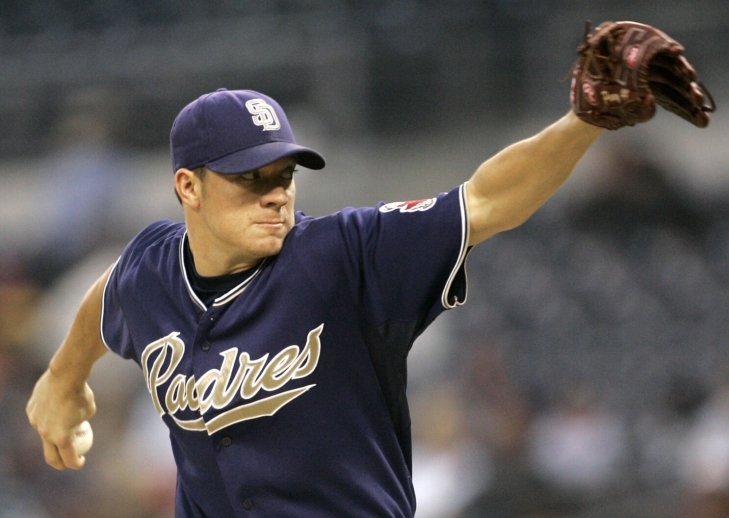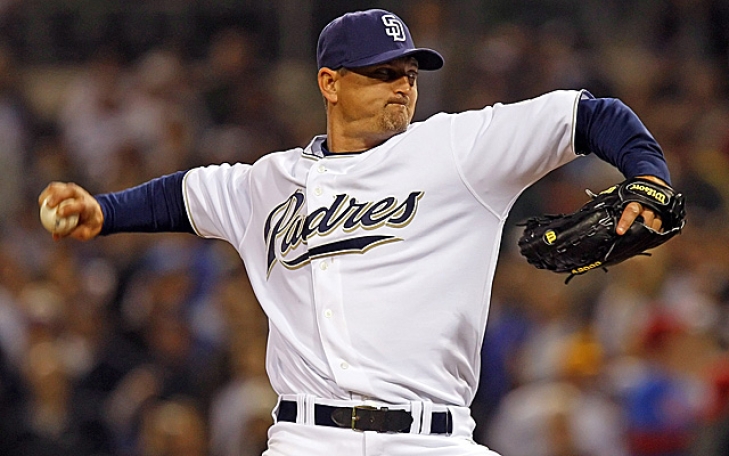
Committee Chairman
5. Randy Jones
Randy Jones might be one of the most unexpected and forgotten Cy Young winners in history, but this was not a one-season wonder, as many might misremember.
Jones broke in the Majors with the Padres in 1973, going 7-6, but his sophomore year was abysmal. While it was evident that Jones had talent, San Diego was not very good, and he lost a league-leading 22 Games against only 8 Wins and a 4.45 ERA. He remained on the rotation going into 1975, and while the Padres brass knew the potential was there, what Jones put forth had to feel like it came out of the sky.
Jones' 1975 campaign saw the lefthander lead the NL in ERA (2.24) and ERA+ (156) and was second to the legendary Tom Seaver for the Cy Young. He had an even better 1976, leading the league in Wins (22), Complete Games (25), Innings Pitched (25), and WHIP (1.027) with a healthy ERA of 2.74. That year, Jones won the Cy Young, becoming the first Padre to win a major individual award.
Jones might not have been able to have another monster year, as he was up and down over the next four years, never regaining an All-Star form but remaining a serviceable starter. He was traded to the Mets after the 1980 Season, and while Jones had a losing record with San Diego (92-105), he was an integral part of the growth of the franchise.
In 1999, the Padres enshrined Jones into their inaugural Hall of Fame Class two years after they retired his number 37.
3. Dave Winfield
A two-sport star in Minnesota, Dave Winfield easily could have had a career in professional basketball. Instead, he opted for the diamond, and the Padres used their Fourth Overall Pick to take the prodigy.
Winfield started immediately for the Padres, bypassing the minors. While he was a good Pitcher, San Diego wanted his bat, and he was used in Rightfield, a position he took too quickly. Winfield hit 20 Home Runs in 1974 and was gradually improving and made his first All-Star Game in 1977, the first of what would be 12 straight. He belted 25 Home Runs that year, 24 the next, and in 1979, he had his best year in a Padres uniform with 34 Home Runs, a league-leading 118 RBIs, and a .308 Batting Average. Winfield led the NL in bWAR for Position Players and was third for the MVP. He played one more season for San Diego before he signed with the New York Yankees as a Free Agent.
With the Padres, Winfield amassed 1,134 Hits, 154 Home Runs with a Batting Average of .284. The Baseball Hall of Fame inducted Winfield into their Hall of Fame in his first year of eligibility, and the Padres retired his number 31 the same year. San Diego also inducted Winfield into their Hall the year before.
4. Jake Peavy
Jake Peavy debuted in the Majors in 2002, roughly three years after he was a throwaway pick (15th Round) in the Amateur Draft.
A righthanded starter, Peavy never left the Padres rotation for the entirety of his seven-year stay, with him emerging as the staff ace in 2004. In that season, Peavy led the NL in ERA (2.27) and would be named to the All-Star Game the following season, this time finishing the year with a 2.88 ERA and a league-leading 216 Strikeouts.
After a disappointing 2006, Peavy had the best year of his career, winning the Pitcher's Triple Crown (19 Wins, 2.54 ERA, 240 SO) while also topping the NL in FIP (2.84), WHIP (1.061), and SO/9 (9.7). Naturally, Peavy won the Cy Young, and he was an All-Star for the second time.
Peavy failed to reach those heights again, and he would be traded to the White Sox at the 2009 trading deadline. With the Padres, Peavy posted a 92-68 record with 1,348 Strikeouts, which as of this writing, is the franchise record.
2. Trevor Hoffman
The San Diego Padres raised concerns in the summer of 1993 when they traded Gary Sheffield to Florida, but one of the players they received in return was Trevor Hoffman, a rookie reliever who would become the best Relief Pitcher in National League history.
Hoffman would become their closer the following year, and he would soon prove himself as a dominating presence. He would enter the game to the ominous opening of AC/DC's "Hells Bells," and in 1998, he led the NL in Saves (53) and took the Padres to the World Series. They fell to the Yankees, but they would have never have gotten there without Hoffman.
Hoffman continued to be the top closer in the NL, with another league-lead in Saves in 2006 and nine 40-Save seasons. He was the first player in baseball history to reach 500 Saves and 600 Saves (though he was with Milwaukee at the time), and he accrued 552 of his 601 Saves as a Padre.
San Diego retired his number 51 in 2011 and inducted Hoffman to their franchise Hall of Fame three years later. In 2018, Cooperstown came calling, inducting Hoffman in the third year of his eligibility. Appropriately, the player considered the best reliever in the NL now wins the Trevor Hoffman Award.
